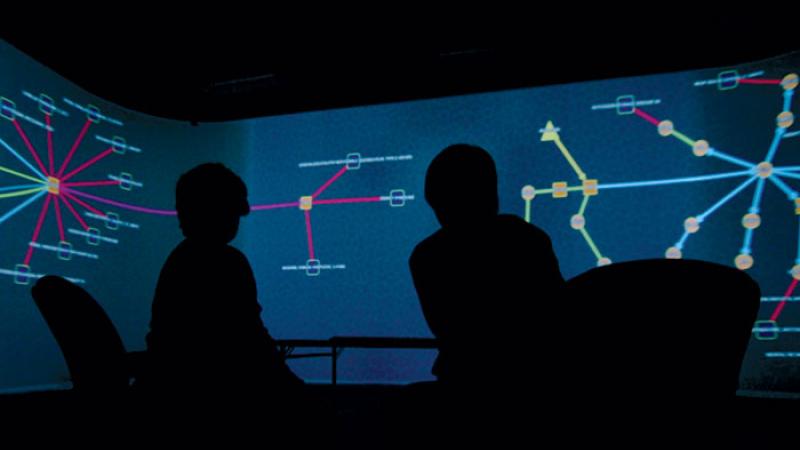Students will work with researchers to help create data representations that diverse audiences can understand
December 10, 2015

The newest Electronic Media, Arts, and Communication (EMAC) concentration will equip Rensselaer graduates to present data in multiple ways—including visual, sonic, and other sensory representations—that better communicate the stories behind the data and its potential to improve everyday life.
Launched earlier this year, the Multisensory Data Design Concentration is the latest option for students pursuing the B.S. in EMAC, a joint program of the Department of the Arts and the Department of Communication and Media. The new concentration is yet another example of the value of the interdisciplinary emphasis at Rensselaer.
As one of the first programs of its kind in the nation, Multisensory Data Design breaks new ground in preparing students for careers in big data. Perhaps even more important, Multisensory Data Design integrates two platforms that are unparalleled worldwide for their capabilities and innovation: the Rensselaer Institute for Data Exploration and Applications (IDEA) and the Curtis R. Priem Experimental Media and Performing Arts Center (EMPAC).
As The New Polytechnic, Rensselaer focuses students on the great challenges humanity faces—on the necessity of collaborating across disciplines, sectors, and global regions, and of developing and employing advanced technologies to address them. The Multisensory Data Design Concentration is a program that explores connections, in this case between the humanities and data science, to advance understanding and help solve society’s problems.
With IDEA and EMPAC, students enrolled in the concentration will benefit from some of the world's most advanced supercomputing, data visualization, and large-scale virtual reality systems. Students also will work with world-class researchers to help create data representations that diverse audiences can understand. Most of all, students will move beyond analyzing and presenting data on a computer screen to showcasing the relationships that could help unlock the data’s potential.
“As the term ‘data exploration’ in our name implies, data science is about more than just running some computer programs on a bunch of numbers in a spreadsheet,” IDEA Director Jim Hendler said. “To truly understand and use data, we must create systems that bring humans and computers together to exploit the power of the computers and the creativity of the humans.
“The new EMAC concentration will teach our students to turn data into stories and to present these to humans so as to exploit the sensory suite we are born with—eyes, ears, touch, etc.,” he added. “In this way, the concentration continues the Rensselaer tradition as a leader in applying critical technologies to improving everyday life and meeting the challenges of the future.”
Communication and Media Professor Patricia Search, who helped develop the new concentration, sees enormous demand for those who can tap multiple senses to unlock, interpret, and communicate the myriad information contained in today’s complex data sets.
“We get caught up in the numbers, but data is really about narratives,” she said. “When you use multiple senses to represent data, you develop more intuitive ways to interpret the data—to help others see important relationships and make the human connection.
“Whatever the data, there is always a way that it affects us,” Search added. “Whether we're looking at human health or the environment, roads and bridges, or government policy, all these things depend on data and data analysis.”